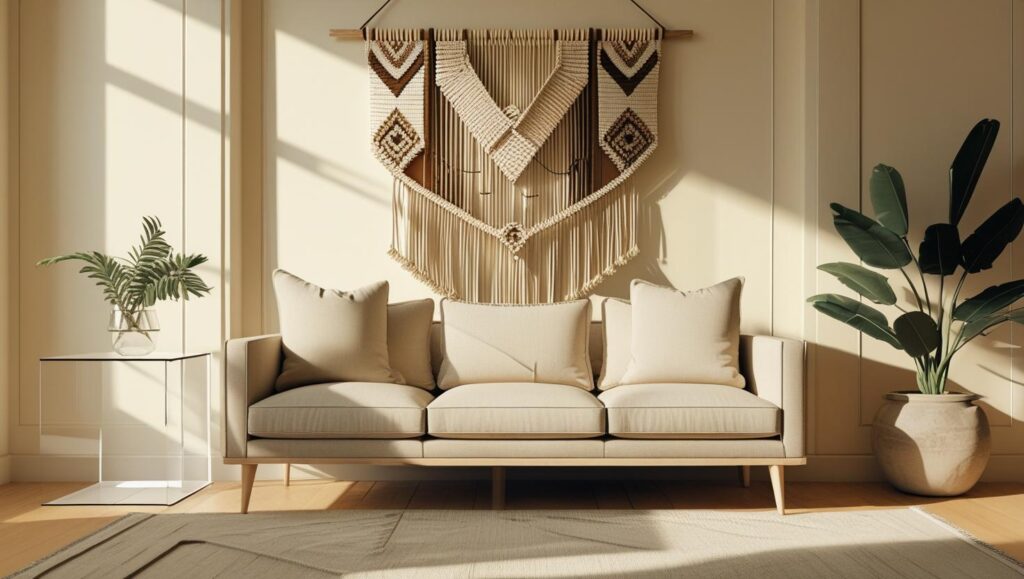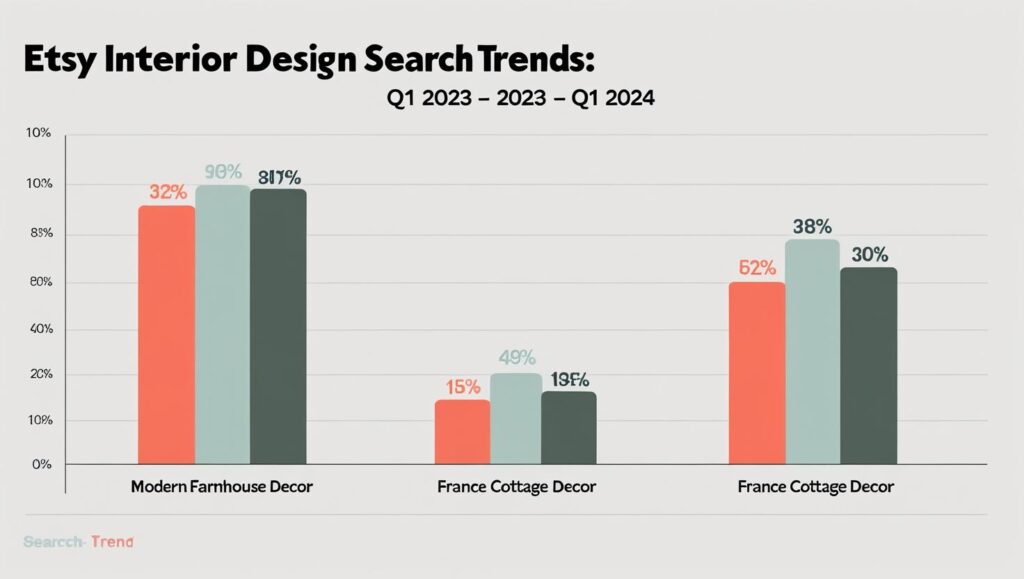Interior design trends once relegated to the recent past—including the ubiquitous modern farmhouse, the free-spirited boho aesthetic, and the futuristic gleam of Y2K—are making a significant and measurable comeback. According to a new trend analysis by the global online marketplace Etsy, these outdated home trends are not only returning but are being enthusiastically re-embraced by consumers, signaling a broader cultural shift toward nostalgia and personalized, layered living spaces.

The report, released in celebration of the company’s 20th anniversary, analyzes recent search data on the platform, revealing dramatic increases in customer interest for items associated with these styles. The findings suggest that instead of fading away, this aesthetics are evolving, blending with new influences and resonating with a desire for comfort, authenticity, and playful self-expression in a post-minimalist world. Nostalgia brings comfort and I think revisiting styles from the past helps ground us,” said Dayna Isom Johnson, the official Trend Expert for Etsy, in a recent interview with VITA Daily. “But it’s also about play. We’re seeing shoppers and sellers reinvent these familiar styles with new energy and a fresh, handmade twist.
The New Farmhouse: A Softer, More European Look
Perhaps the most notable revival is that of farmhouse decor, a style that dominated the 2010s. While some critics have declared it over, Etsy’s data indicates a powerful transformation rather than a disappearance. Searches for “modern farmhouse decor” have surged by nearly 3,500%, according to figures reported by Better Homes & Gardens.
This updated version moves away from the more literal interpretations of barn doors and excessive shiplap. Instead, it leans into a more refined, comfortable aesthetic. Underscoring this evolution is a staggering 26,000% jump in searches for “France cottage decor.” This sub-genre, often dubbed “Châteaucore,” points to a growing desire for the rustic yet elegant charm of the European countryside.
“What began with shiplap and barn doors in the late 2010s has transformed into something more elevated,” Johnson explained. Key elements of this revival include:
- Warm, natural materials: Reclaimed wood, linen textiles, and vintage-inspired ceramics.
- Muted, earthy color palettes: Moving beyond gray and white to include soft sage, terracotta, and creamy beiges.
- Architectural details: An emphasis on arches, texture, and antique or vintage furniture pieces that add a sense of history.
Independent design experts note that this evolution is key to the style’s staying power. “Functionality, warm hues, and textured fabrics are the foundation of timeless design,” Nancy Parrish, principal designer of Nancy Parrish Interiors, told The Spruce, suggesting the style is shifting rather than ending.

The Boho Boom Gets a Refined Reboot
The bohemian, or “boho,” aesthetic, long associated with the festival culture of the early 2010s, is also experiencing a powerful resurgence. Etsy reports that searches for “boho macrame” decor have climbed nearly 400%. This revival, however, is not a simple repeat of its earlier, more chaotic incarnation.
The 2025 version of boho is more grounded, refined, and intertwined with principles of wellness and sustainability. It prioritizes natural materials, handcrafted quality, and a sense of calm.
“Right now, we’re seeing a more refined take on boho: softer palettes, natural materials, and a focus on intentional living,” Johnson noted. This new chapter for the interior design style is characterized by:
- Textural, handmade items: Macrame wall hangings, tufted pillows, and handwoven rugs remain central.
- Earthy and sustainable materials: An abundance of rattan, jute, wicker, and reclaimed wood.
- A layered, personal feel: The style encourages mixing vintage finds with contemporary pieces to tell a personal story.
This evolution aligns with a broader trend toward creating homes that feel like personal sanctuaries. “This modern iteration champions handcrafted, artisanal creations made from natural, organic, and upcycled materials,” writes Elisabetta Rizzato, an interior designer and founder of the blog Italian Bark.
Y2K Decor: Playful, Futuristic Nostalgia
The third major revival is the return of Y2K decor, an aesthetic born from the optimism and anxieties of the new millennium. Characterized by a mix of futuristic technology and playful, often kitschy, pop culture references, this trend is finding new life, particularly among younger consumers. Etsy has seen a more than 250% increase in searches for “Y2K decor,” with a custom neon sign becoming one of the platform’s most favorited items of all time.
“For millennials, it’s nostalgia; for Gen Z, it’s a retro fantasy,” Johnson commented on the trend’s broad appeal.
The core elements of the Y2K home decor revival include:
- Futuristic finishes: Chrome, acrylic, and iridescent or holographic surfaces.
- Vibrant, bold colors: Bubblegum pink, lime green, and digital blues, often in high-gloss finishes.
- Playful and novelty items: Think lava lamps, beaded curtains, and inflatable furniture, now reinterpreted with higher quality materials.

The return of these three distinct styles points to a collective desire to create homes that are more personal and less constrained by rigid design rules. As mass-produced homogeneity becomes more common, the data suggests a turn toward aesthetics that feel unique, layered, and rich with story. This wave of nostalgia is not about perfectly recreating the past, but about selectively borrowing its most beloved elements to craft a comfortable and expressive future.
How to Clean Walls Before Painting: The Overlooked Step Experts Say Is Crucial for a Flawless Finish
